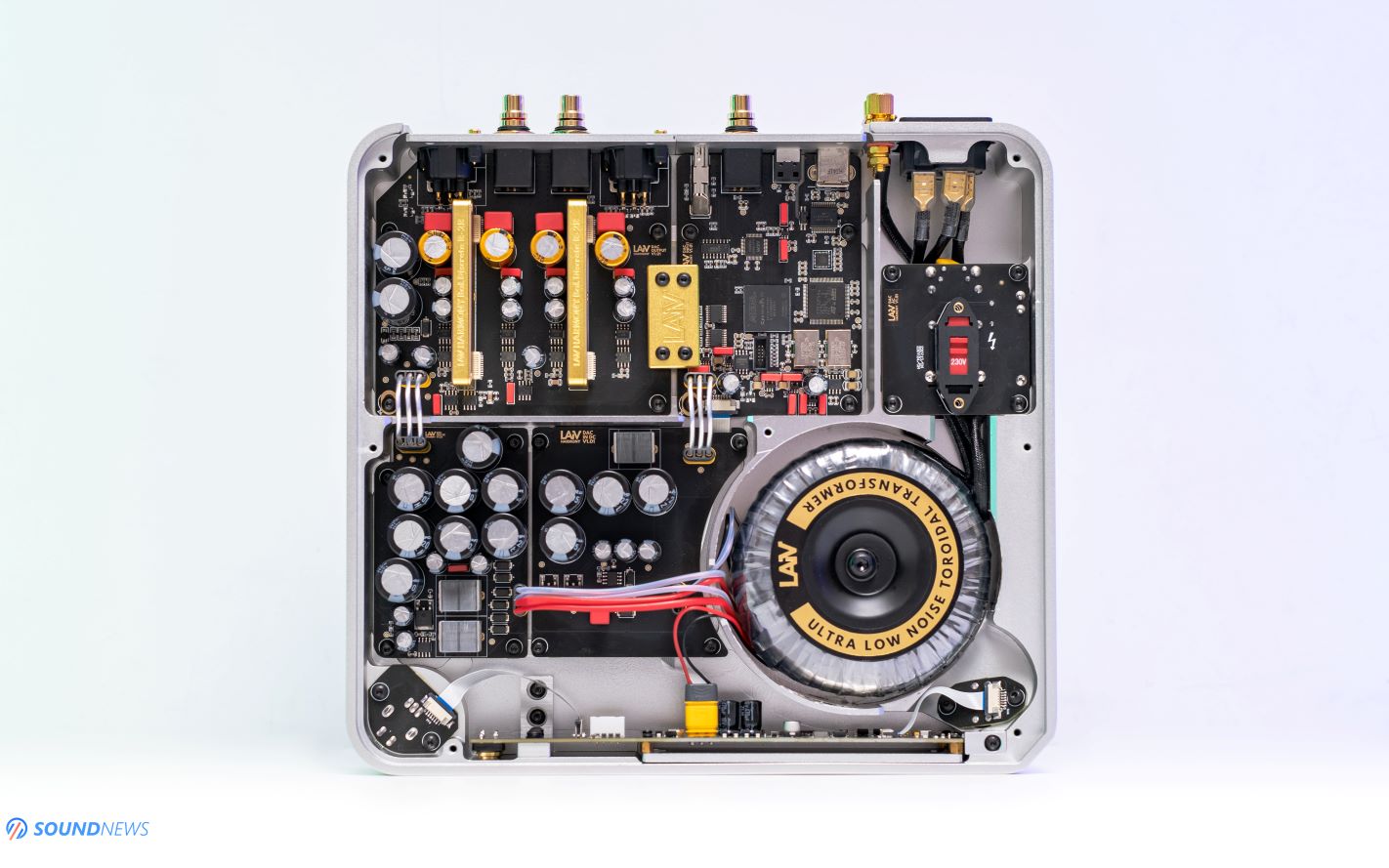
Alright folks, listen up! We’ve been dishing out free DAC reviews for a long time now, and the generosity ain’t stopping anytime soon. Every review makes us a bit wiser, a bit greyer, and fills us with the joy of helping you make better purchase decisions. We don’t play favorites based on origin; what matters is phenomenal sound and a price that makes sense. I’ll admit, that I can be a stubborn old mule about some things, but DACs are where a genius implementation beats tech specs any day of the week. That said, it often feels like those time-tested classic technologies still offer something special.
Over the years, I’ve gone through a mountain of D/A converters in my quest for that elusive sonic nirvana. As I got older, I realized that music isn’t just about technical prowess. Sure, resolution and dynamics are key, but there’s magic out there that makes the hair on my arms stand up and my imagination take flight. It ain’t just about those lab tests and charts – some mysteries can’t be captured by fancy equipment. Your brain, though, it knows the difference. There was a time when I was the ultimate measurements geek, obsessed with SINAD, THD, and the whole nine yards. I owned the top five DACs spec-wise, and then…a Rockna Wavelight R2R ladder DAC dropped into my system and changed everything from the ground up. It measured worse on paper but refused to let me go once the music flowed. It was pure, unexplainable sorcery. It made the soundscape broader, vocals cut deeper… WHY? It defied everything I thought I knew.
That was the day I started exploring the world of fully discrete amplifiers, then tube amps of all stripes. And guess what? These brought back that vivid, in-your-face sound of my 90s grunge days, ripped jeans and all. So much for swearing by spec sheets above the musical experience itself. After years of searching, I finally have my dream DAC duo: an R2R monster and a killer FPGA software-defined machine. That Rockna Wavedream Signature is my main battle tank, now partnered with a Wavedream NET Roon server…it’s a setup that takes me places no chart could ever describe. This is my heavyweight champion, proof that R2R magic still reigns supreme.
But something special happened recently – a unit that feels less like hype and more like the real deal landed at my doorstep. This could be a major shake-up moment, folks. The LAiV Harmony DAC isn’t just about sound quality – the team behind it gets the bigger picture. Economics, supply chains, craftsmanship… and I’d bet my last dollar this is just the first move in a grander game.
Let’s be real, I adore my Wavedream Signature and the Chord DAVE but, man, they sting the wallet. I want to recommend gear that delivers amazing value, not stuff only rock stars can afford. And that’s where Harmony hits the sweet spot. That $2700 price tag? Sure, it’s undeniably alluring. But you know what’s even hotter? Free worldwide shipping AND a 30-day return policy! LAiV earned some serious respect before a single note played. But enough with the buildup, let’s address some tricky questions to the people behind this sexy-looking unit.
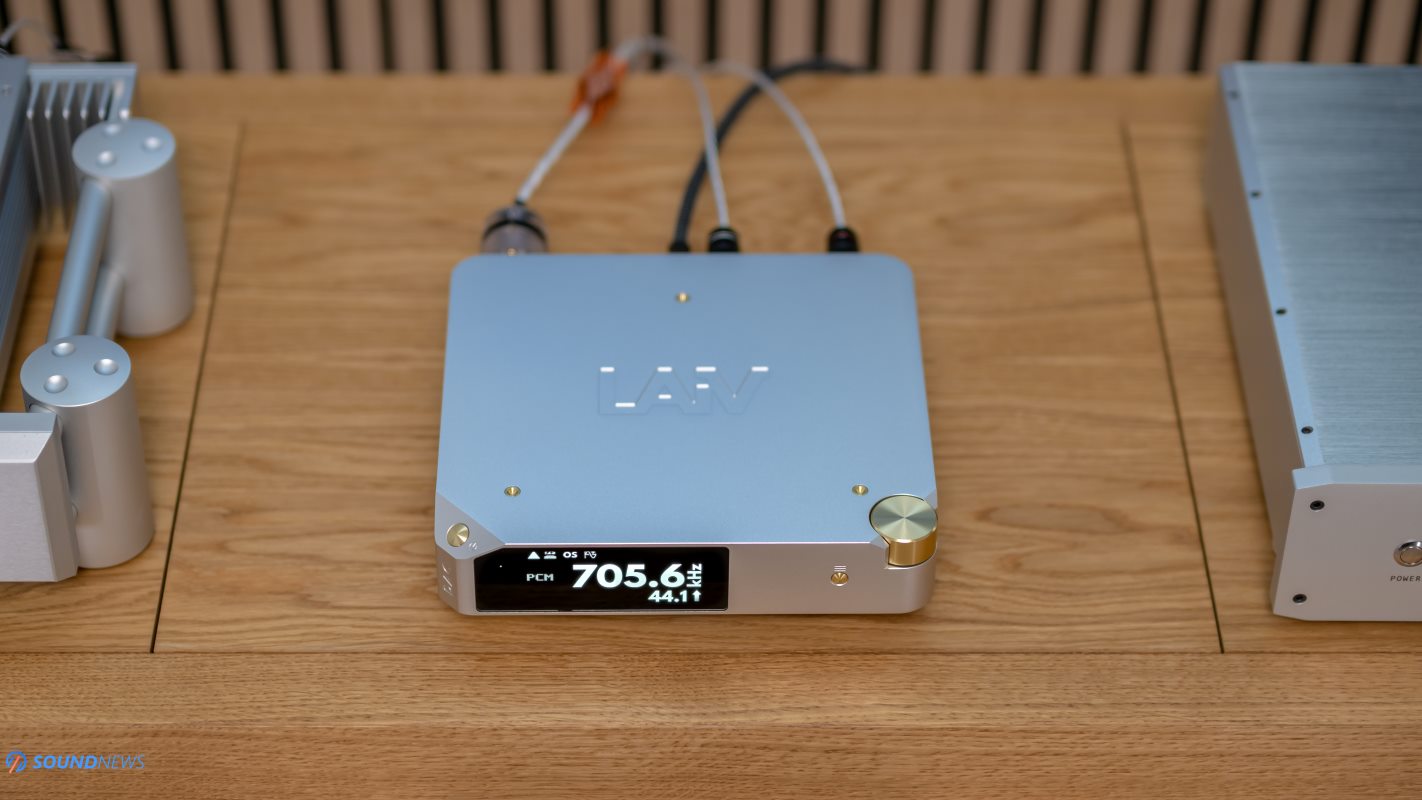
Q&A Session with LAiV Audio
Q1: Weng Fai Hoh, that unboxing experience would make a Cupertino designer blush! Even the cardboard spike-aligner is pure brilliance. Did this magic spring fully formed from your mind, or evolve as the project took flight?
Weng Fai Hoh: From the inception of our brand, creating a memorable unboxing experience has been a top priority. I wanted customers to feel the same excitement and delight that lasts beyond the initial opening. As a user of 3 spikes myself, I know the challenges of positioning them accurately without causing damage. So, designing the three spike aligner was a key focus in our product development. We dedicated significant time to perfecting the cardboard design to ensure it complements the Harmony DAC and is user-friendly.
Q2: Let’s journey back to the genesis. What was the moment that sparked LAiV Audio? Because starting a whole new audio brand? That takes serious guts.
Weng Fai Hoh: It all started with a dream to turn our wish list of features into the product by combining my industrial engineering knowledge. The LAIV brand was born from this dream and the opportunity to work with a team of like-minded individuals experienced in high-end audio.
Q3: A DAC as your opening act, and an R2R ladder at that! You’re already out-cooling the coolest kids on the block, including the DACMan 😉
Weng Fai Hoh: Healthy competition can spur creativity and innovation, which ultimately benefits the users.
Q4: Did Harmony have a long and winding development road? What were the biggest hurdles, and how did you leap over them in style?
Weng Fai Hoh: Developing the DAC took about a year, but with each team member excelling in their role, the process was relatively smooth. The main challenge was fitting all the features into the compact size of the Harmony DAC without compromising on quality.
Q5: That modular design has me intrigued. Are you shielding circuits for sonic purity, or is this about making future fixes a breeze?
Weng Fai Hoh: Wonderful questions, the modular design offers both flexibility for future upgrades and convenience for maintenance, similar to having individual devices for each function in your audio system. Besides that, with modular design in mind, it allows us to focus on each element and deliver the best of them.
Q6: Modular builds usually carry a hefty price tag, but Harmony DAC defies expectations. Spill the secrets, how did you pull off this magic trick?
Weng Fai Hoh: The key was to minimize size and control costs meticulously in every detail.
Q7: Harmony’s a rebel, shrinking the size, power draw, and most importantly, shattering R2R sonic stereotypes. Was this a deliberate “screw it, we’re doing things differently” move?
Weng Fai Hoh: Absolutely! We aimed to be different in a positive way and fulfill our wish list to provide our users with a great experience.
Q8: Crafting custom R2R modules sounds like the ultimate test of patience. Were there moments you wanted to bin the whole thing and just grab some off-the-shelf chips? How many times did you revise and refine those resistor ladders?
Weng Fai Hoh: Despite the challenges, we’ve forgotten the hardships because we’re able to bring joy to our users.
Q9: The case, the remote – pure elegance! Can we give a shoutout to the mastermind who sculpted these beauties? A round of beers on us!
Weng Fai Hoh: Take a guess – the name starts with W and ends with an i. 😁
Q10: Importing fees AND shipping baked into the price? Are you trying to give audiophiles a collective heart attack from sheer joy?
Weng Fai Hoh: Our goal is to provide users with a transparent purchasing experience without hidden costs. We’re actively working to make importing fees and taxes for EU countries possible.
Closing Words: Thanks for the exhilarating Q&A session! We can’t wait to see (and hear!) what LAiV Audio cooks up next. Keep the fire blazing!

Unboxing Experience
Forget everything you thought you knew about unboxing a high-end audio component. The LAiV Harmony isn’t just about revealing a DAC; it’s curating an experience that hints at the sonic wonders to come. It’s a performance in its own right, designed to leave audiophiles with hearts pounding and fingers itching to hit play.
First, that Certificate of Authenticity. Imagine not some flimsy paper, but a substantial slab of aluminum, its surface etched with your unit’s unique serial number, date of inspection, and the signature of the person who handled the final quality check. Even better – my unit was blessed by Weng Fai Hoh, the genius behind the brand. That personal touch tells you that you’re not just a customer, but part of something special.
And that’s just the start! A mysterious cardboard triangle, adorned with golden circles, initially has me scratching my head. Then, a flash of brilliance: this deceptively simple tool is a stroke of genius for lining up those hefty spikes without damaging precious surfaces. Why hasn’t every audiophile brand thought of this? It’s the kind of detail that immediately tells you LAiV is a different breed.
The Quick Start guide is another level entirely. No flimsy afterthought here. It’s a substantial, beautifully illustrated work of art, walking you through warranty registration, confirming your AC voltage, and demystifying the elegant interface. But, it’s not just about logistics; there’s a joyfulness to it, a sense that LAiV wants this setup to be fun, a prelude to the music itself.
Then, the main event: the Harmony revealed. Initial questions about features and specs vanish, replaced by a gasp of awe. The craftsmanship, the sleek curves, the way every aspect feels meticulously considered… it exudes quality. The remote control alone is a testament to this: solid, weighty, and visually striking. Forget the cheap plastic affairs that get tossed in a drawer – this is something you’ll actually want to use and show off. And that microfiber cloth? A final touch that whispers, “This isn’t just a product, it’s an investment.”
This unboxing experience is a masterclass in anticipation. LAiV understands that the magic starts long before you hear the first note. They’re saying, “We care about every aspect of owning this DAC – from the joy of unwrapping it to years of sonic bliss.” This is high-fidelity audio elevated to an art form.
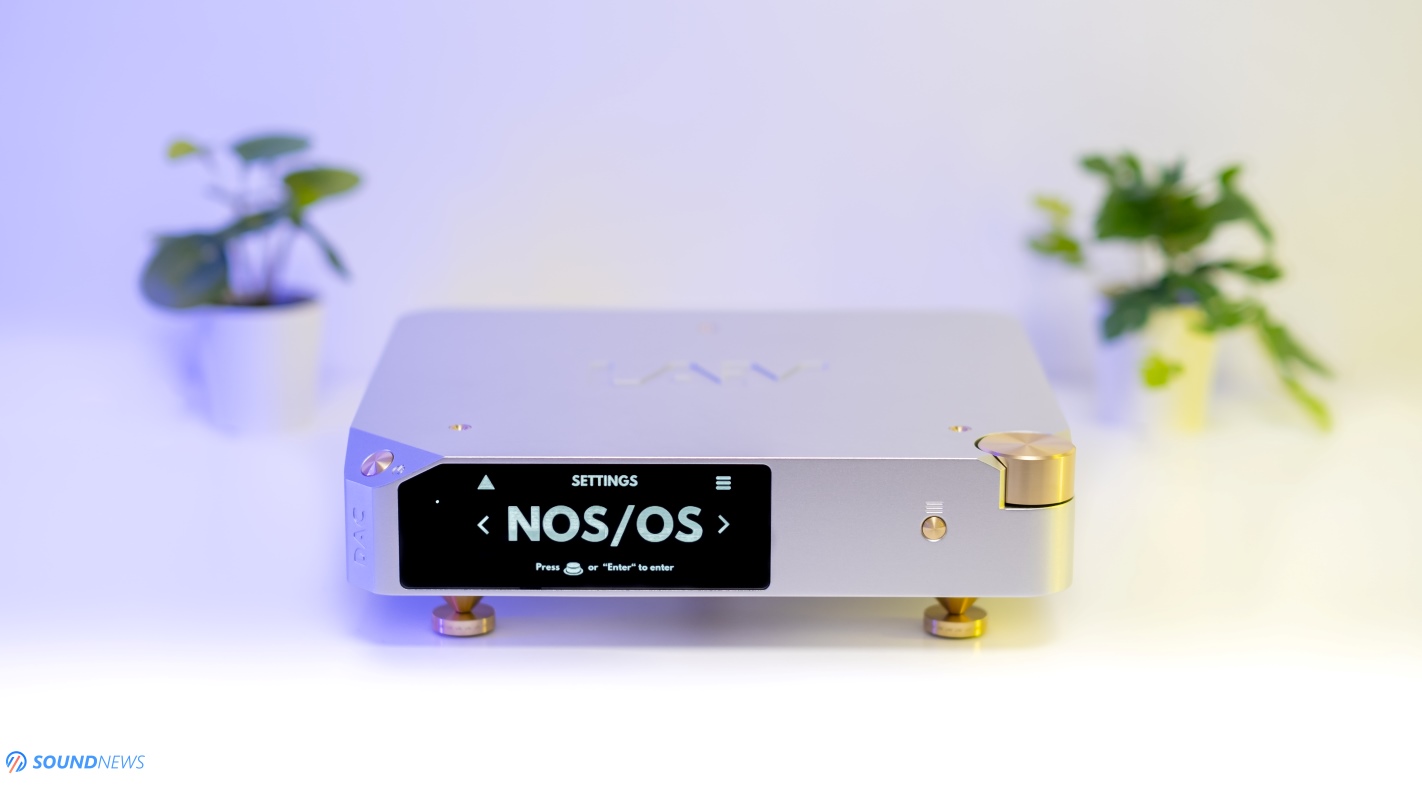
Design & Build Quality
Let’s be honest, this beauty has a serious Mac Mini vibe, just a bit… chunkier. Those smoothly rounded edges have a playful touch, and that oversized CNC-machined wheel on the front right corner? It’s practically begging to be mistaken for a volume knob. Well, the joke’s on everyone, because the Harmony DAC is all about the pure signal, leaving volume adjustments to lesser devices. If you’re yearning for a preamp, mark your calendars – their upcoming HP2A headphone amp/preamp promises to be the perfect companion later this year. But for now, that wheel is your trusty guide through the delightfully intuitive user interface. Want it in classic black or elegant silver? The choice is yours, and my loaner’s sleek silver finish blended seamlessly with my existing setup.
Now, let’s talk about that glorious 3.83″ monochrome OLED screen. It’s a sight to behold, dominating the front panel and displaying all the vital info with crystal clarity. The lettering is so generously sized, that I could practically read it from my comfy armchair across the room. Underneath, three robust spikes (and included spike shoes) provide rock-solid stability. And those meticulously carved spaces on top? They’re like VIP parking spots, eagerly awaiting the eventual arrival of the HP2A for a stunning family reunion. While its compact footprint saves desk space, that hefty 4.3-kilo weight is a constant reminder that you’re not messing with some lightweight wannabe – this is serious audiophile machinery.
My curiosity couldn’t be contained – I simply had to get a glimpse under the hood. And boy, was I impressed! Imagine the chassis meticulously crafted from a single block of aluminum – that’s the kind of state-of-the-art craftsmanship you expect from gear of this caliber. The innards resembled a meticulously planned cityscape, with separate districts dedicated to the AC input board, the mighty toroidal transformer, DC input and output, and all the digital and analog input boards. And did I mention there are five separate boards? This modular approach is a stroke of genius – isolate a problem, swap out the component, and you’re back in business.
Bottom line: this DAC doesn’t just look the part; from the immaculate internal layout to the single-block aluminum construction and those oh-so-satisfying curves, every inch exudes an unwavering commitment to quality. It’s easily the most striking DAC to ever grace my listening space.
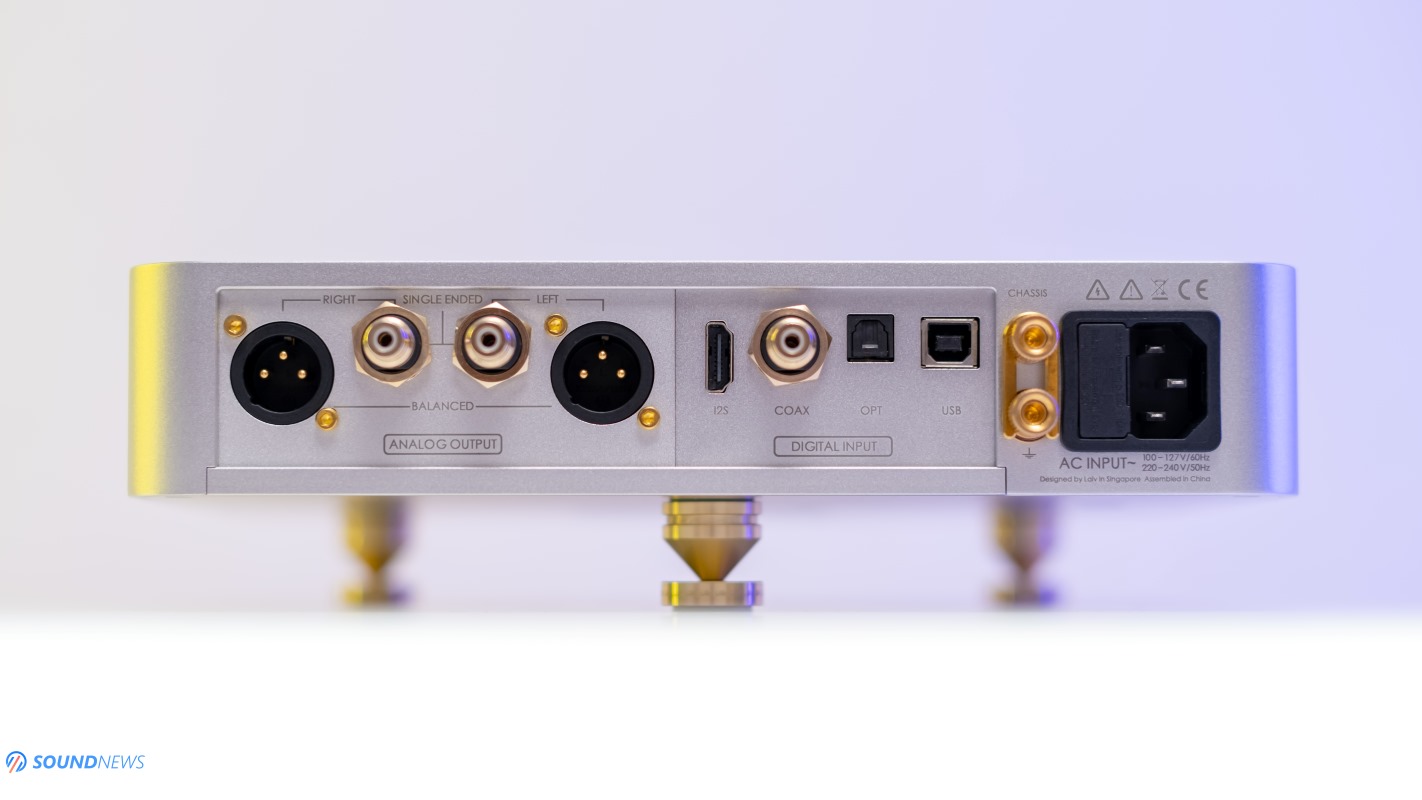
Controls & I/O
Let’s face it, nobody buys a fancy DAC to spend hours lost in cryptic menus. LAiV gets this. Power up the Harmony DAC, and it’s ready to rock. Seriously, it’s that simple. Two sleek buttons on the front – one for power, the other unlocking a no-nonsense menu. Want more control? That’s where the big, glorious dial comes in. Spin it for easy navigation, a satisfying press selects your option – it’s almost as addictive as spinning a vinyl record. Of course, the included remote puts the whole show in the palm of your hand if you prefer.
Now, flip that beauty around and prepare to be impressed. This isn’t some bare-bones DAC. You’ve got USB Type-B, Coaxial, Optical… and the real prize: I2S input for the purest signal your source can deliver. Bluetooth? Not here, my friends. This is high-end audio, not your average wireless speaker. Rounding things out are those classic RCA and XLR outputs (with serious voltage to spare), ready to pair with your favorite amp of choice.
DSD fans, listen up: USB and I2S are naturally your go-to inputs. Don’t worry, though, the Harmony’s got your back – even R2R purists understand that DSD is here to stay. Those files can’t be played natively on an R2R unit, getting a first-class conversion to PCM, ensuring that all your hi-res goodies are treated with the respect (and the sonic detail) they deserve.
At the end of the day, the Harmony DAC offers a perfect blend of no-nonsense connectivity and audiophile flexibility. It’s got your back, letting you focus on what matters: the music.
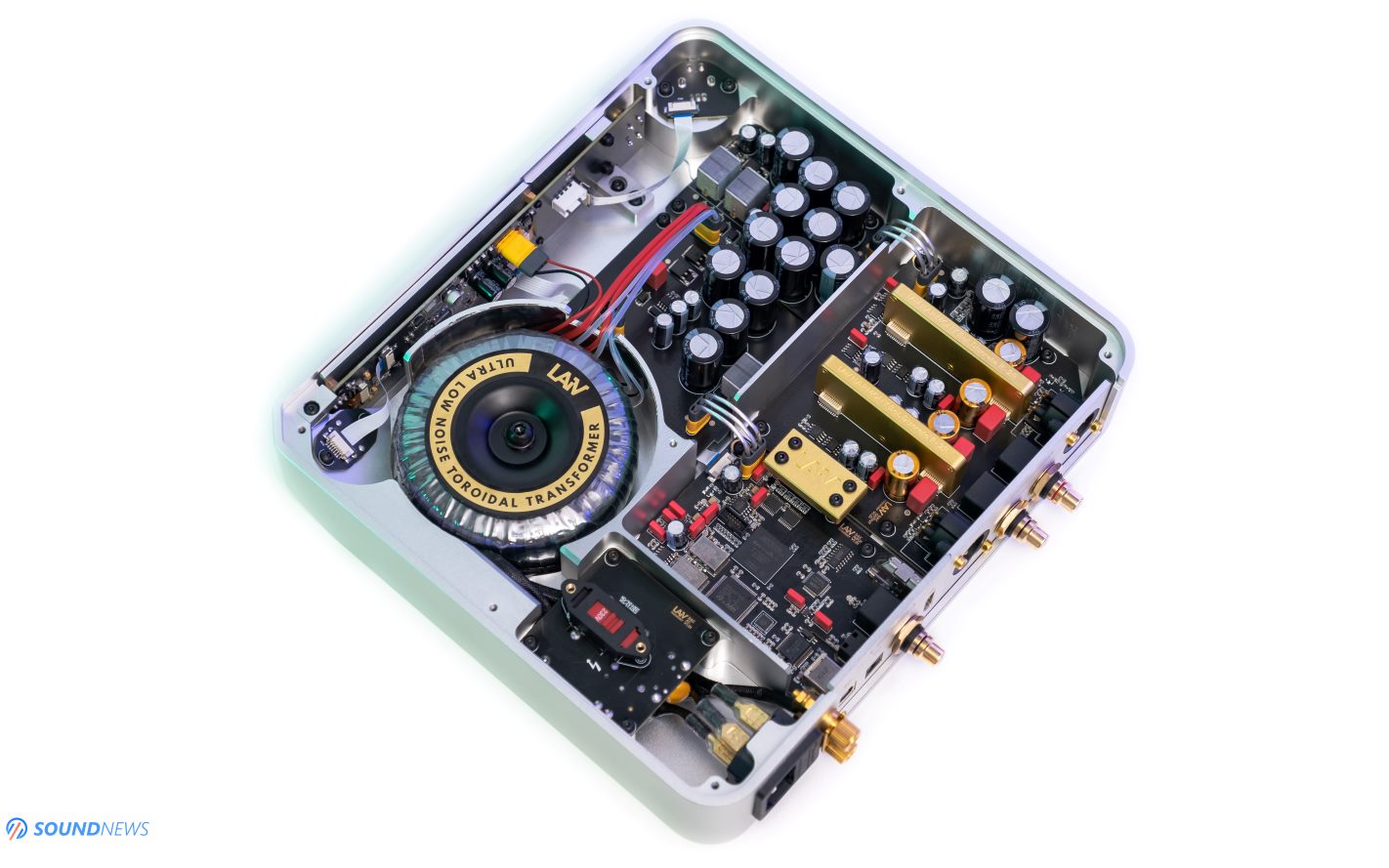
Under its Hood
Ah, the thrill of the unknown – that’s what drew me to D/A converters back in those university days. Forget wrangling cardboard enclosures and tinfoil shielding instead of sleek aluminum; the real excitement lay in those enigmatic circuit boards. Amplifiers were straightforward, almost predictable: power, input, output, and you were ready to rock. But D/A converters held a mystique, a promise of untamed sonic landscapes waiting to be mapped.
Torx screwdriver in hand, I cracked open the Harmony DAC’s enclosure and felt that familiar surge of anticipation. With custom-built R2R ladder DACs, no two units are ever truly identical. It’s a refreshing change from the monotony of those mass-produced chip-based Delta-Sigmas – with those, you feel like if you’ve seen one, you’ve seen ’em all. But with the Harmony DAC, every stage felt like a new discovery. The signal path unfolded before me with delightful clarity – voltage selection, a massive transformer worthy of an audiophile shrine, DC input, and DC output stages overflowing with filters and regulators. This was meticulously purified power, its potential humming with barely restrained energy.
Then came the pièce de résistance: those glorious, fully discrete R-2R ladder networks, gleaming like golden treasures. But the surprises didn’t stop there – the digital input board was a treasure trove itself. Sure, there was the expected digital receiver, but nestled alongside it were an ARM CPU and an Altera Cyclone IV FPGA, their tiny forms brimming with custom code. And those clocks! Dual Crystek CCHD-957 femtosecond beauties, the kind that would make far pricier DACs blush. Top it all off with a generous scattering of Rubicon ZLH capacitors and a strategic quartet of Audio Note Kasei bi-polars… this wasn’t just assembly; this was audio artistry.
Let’s take a moment for those less familiar with the magic of R2R DACs. Those resistor ladders are the heart of the operation, where the cold precision of digital data transforms into the warmth of analog soundwaves. And trust me, LAiV treats these ladders with reverence. They hand-select each and every resistor, ruthlessly discarding any that don’t meet their exacting 0.05% precision standards. Is it tedious? Absolutely! Is it vital for that expansive, room-filling sound only the finest R2R units can deliver? Without a doubt.
The Harmony DAC’s analog side continues the trend of excellence, with a generous helping of discrete components weaving their spell at the input and output stages. That I2S input even boasts a neat trick – you can play conductor, choosing between the onboard clock (which is no slouch, mind you) or an external I2S source clock for even greater precision. And who wouldn’t love the unexpected bonus of decoding CD track info over S/PDIF? It’s the kind of thoughtful touch that warms an audio geek’s heart.
But sometimes, even my ramblings can’t do a scene justice. So, behold, a glimpse of the Harmony DAC’s inner workings! The immaculate layout, the meticulous component choices… it’s more than just a circuit board. In that single image, you can practically feel the music waiting to be unleashed.
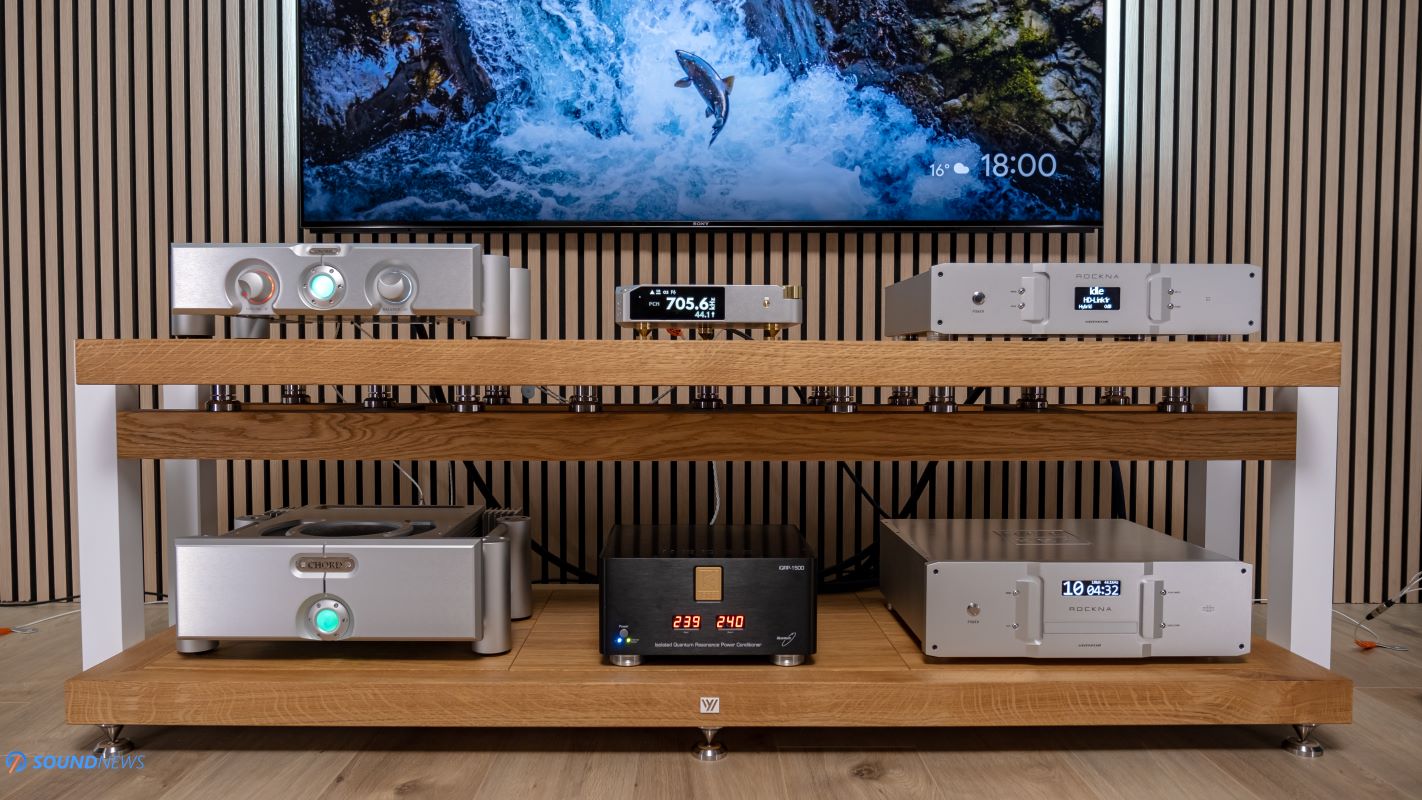
Test Equipment
The LAiV Harmony DAC worked equally well in a headphone battle station and later in a commanding loudspeaker rig. To fully explore its range, I subjected it to two contrasting trials by fire.
- The Headbanging RIG
The Harmony DAC took center stage in my office, its signal feeding into the legendary Trafomatic Primavera headphone amplifier. This glorious beast, in turn, unleashed its fury upon a wide array of my trusted dynamic and planar-magnetic headphones. But power alone isn’t everything – for pristine performance, that Ethernet connection hummed across two media converters, converting pesky electrical interference into pure optical light and back again. And keeping everything fed with the cleanest possible electricity? A KECES S14 linear power supply for the media converters and wireless router, along with a PLIXIR Elite BAC1500 balanced and isolated power conditioner overseeing the whole operation.
- The BIG RIG
Time to shift gears and raise the stakes! Now, the Harmony DAC stood shoulder-to-shoulder with a Chord Electronics Ultima 3 preamplifier and an Ultima 5 power amplifier – a formidable duo indeed, primed to command a pair of Raidho TD 2.2 loudspeakers. Data flowed seamlessly from the Rockna Wavedream NET 4TB, serving double duty as both Roon server and streamer. Meanwhile, a KECES IQRP-1500 balanced passive power conditioner stood sentinel, protecting the power supply for all five of these audiophile titans.
Alrighty, everyone, my body and soul are ready for some well-deserved music, so let’s hit some eardrums!
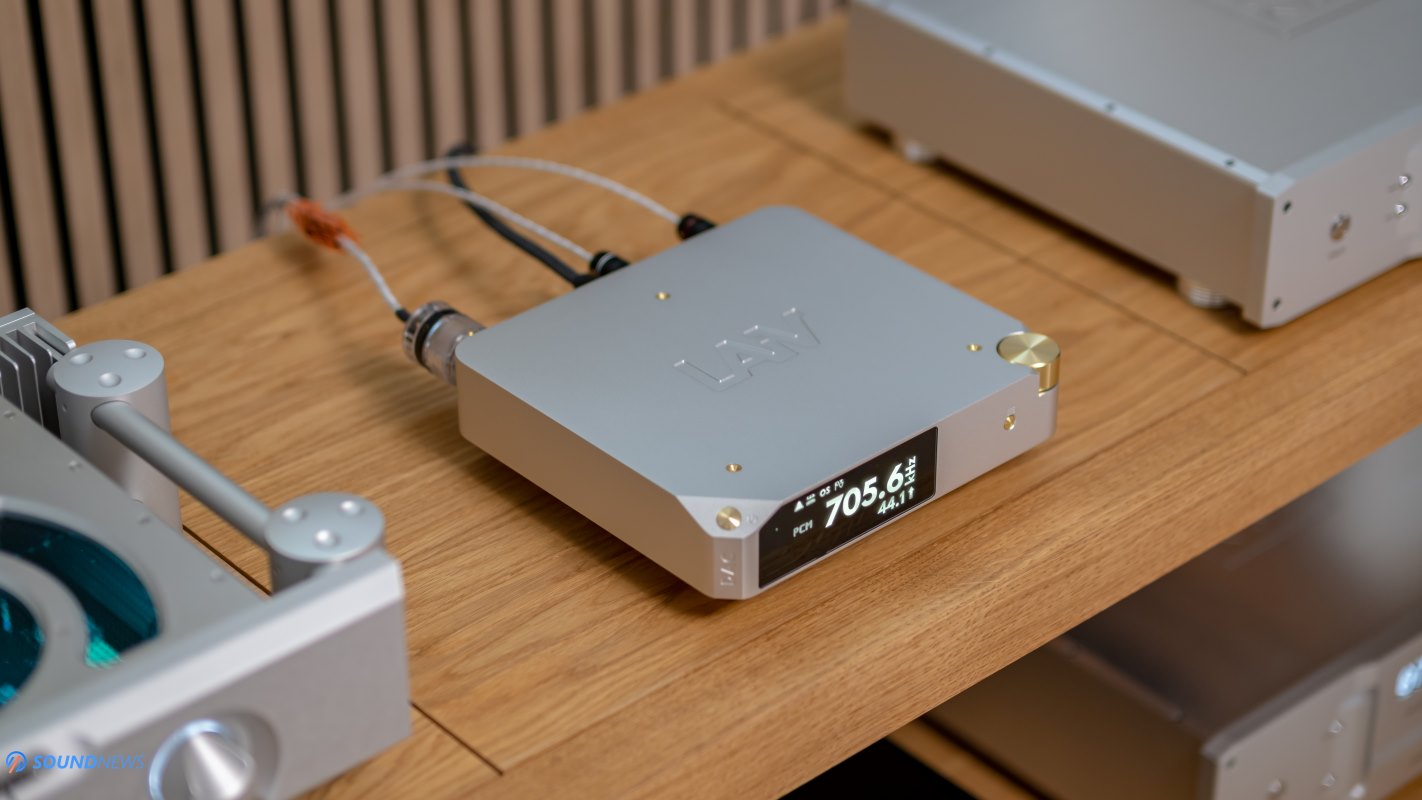
Sound Performance
I. Preliminary Sound impressions
My journey through the world of R-2R ladder DACs has taught me to temper expectations. Affordable models often seduce with warmth and smoothness, but ultimately trade resolution for a musical hug. That’s understandable – building a true high-fidelity R-2R DAC is a monumental task. Custom FPGAs, meticulously selected resistors, beefy output stages to tame the inherent quirks of the design… that’s why the audiophile legends – your Rocknas, your MSBs – exist in a rarefied price bracket.
And it’s not just about raw technical prowess. Those flagship R-2R beasts have a distinct personality. They chase absolute truth above all else. Even a Rockna Wavelight adds just the smallest touch of warmth compared to the brutally revealing Wavedream Signature. Budget-minded R2R designs like the Denafrips Ares or Musician Draco aim to please with smooth, lush soundscapes, sacrificing some resolution for that easy-listening appeal. It’s a tradeoff many audiophiles are more than happy to make, and I certainly understand the allure.
Yet, something about the Harmony DAC defied those expectations from the moment I plugged it into my system and let it sing. The first thing that struck me was an almost unsettling level of transparency. Gone was that cozy, front-row perspective, replaced by a seat in the back of a grand concert hall. I was awash in a sea of sonic information, the delicate echo of the venue itself, yet with an undeniable precision that only the finest R-2R designs can attain. The Harmony wasn’t creating a hazy dream; it was meticulously reconstructing a specific moment in time and space, a near-holographic experience that defied my notions of what a DAC at this price should be capable of.
Then, it hit me: the sheer, naked resolution of the thing. Tracks I’d listened to a thousand times suddenly bloomed with newfound detail. Intricate harmonies, the delicate shiver of a cymbal, the subtle interplay of instruments…it was all there, unmasked and free from the mushy blur of lesser converters. This wasn’t about warmth, sweetness, or some artificial boost in any frequency range. This was pure information, a torrent of sonic data delivered with stunning clarity. Remember, a DAC’s job isn’t to flatter; it’s to calculate with the precision of a master mathematician. After years of craving that sense of sonic intimacy, that feeling of the music wrapping around me, I found myself drawn to this relentless honesty, this unwavering ability to peel back the curtain on my favorite recordings. The Harmony DAC laid everything bare – the artistry, the flaws, the warmth of vintage tape, even the occasional studio mishap – with an unflinching accuracy that bordered on exhilarating.
But the truly astonishing feat? The Harmony conquers that vast sonic landscape with grace. Remember those room-filling experiences I’ve had with top-tier R-2Rs – the Rockna Wavedream Signature, the Denafrips Terminator Plus, and the Musician Taurus, titans that tower over most systems both in size and price? The Harmony, this unassuming, surprisingly compact unit, traded blows with those giants. It paints a sonic canvas that stretches beyond the walls of my listening room, each instrument finding its precise place in a breathtakingly expansive three-dimensional stage.
Even more shocking was the Harmony’s handling of challenging material. That dreaded digital glare, those harsh treble notes that send shivers down my spine with lesser DACs? With the Harmony, they’re transformed. Crank the volume, push those demanding tracks, and this little DAC breathes easy. Harshness transforms into complex overtones; delicate shimmers gain life and texture. Gone is the need to flinch or reach for the tone controls. The Harmony doesn’t try to mask anything – it simply translates the digital signal with such accuracy, such inherent musicality, that those sonic artifacts vanish.
LAiV has achieved the near-impossible: they’ve joined that elite group of engineers and audiophiles who understand the transformative power of honesty in high-fidelity audio. The warm, thick sound of vinyl, the intimate energy of a live performance – the Harmony DAC doesn’t chase trends, it gets as close as possible to the source. It’s a bold, uncompromising choice that will undoubtedly polarize listeners. Yet, for those who crave unfiltered truth, and who seek to rediscover their music collection with startling clarity, the Harmony DAC might just be the breakthrough they’ve been waiting for.
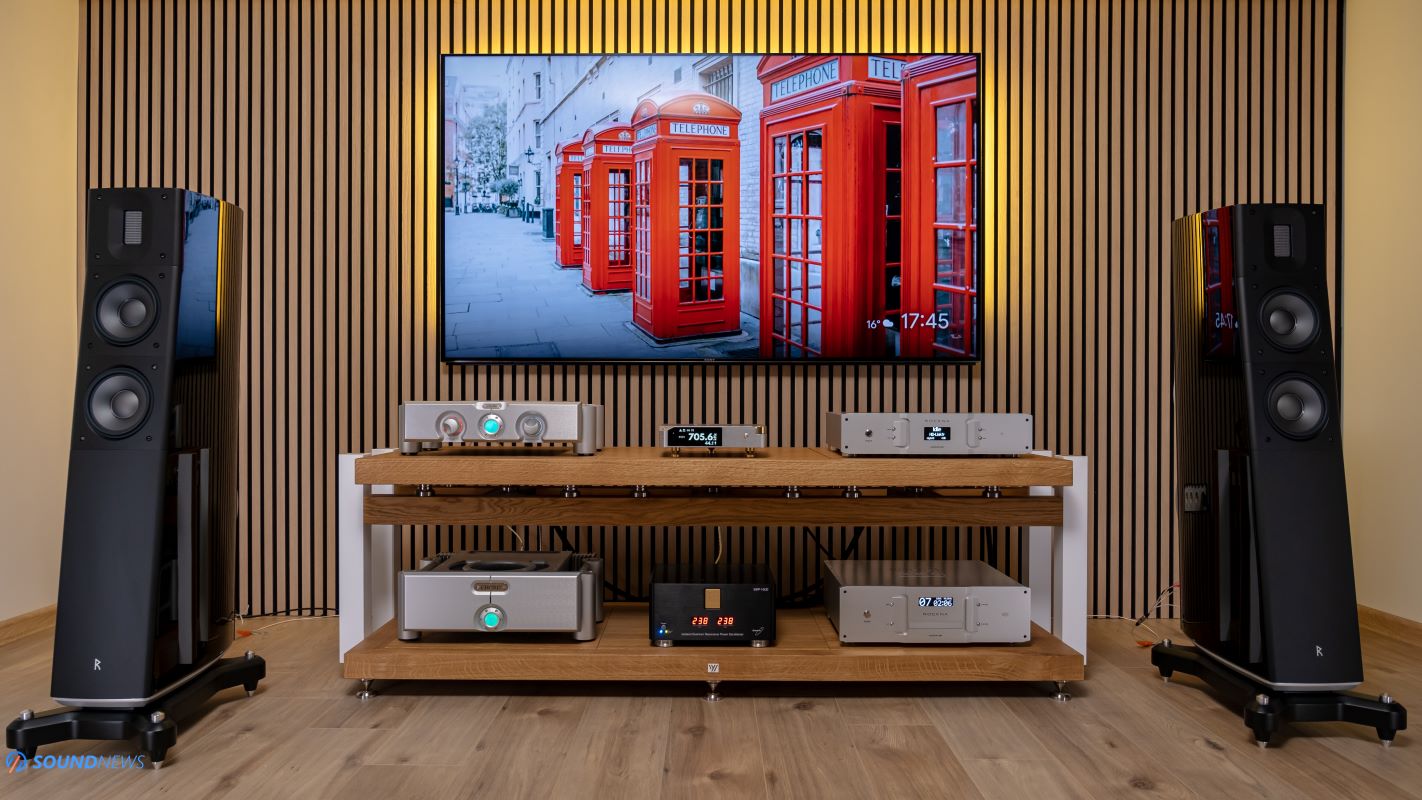
II. Dynamics & Transients
Remember that moment when I first laid eyes on the Harmony DAC, the sleek build, the thoughtful packaging? The first thing I did was call my buddy Catalin, our newest writer around here. He’s a true designer, an artist at heart. One glance at the Harmony, and I knew he’d be hooked. Hours later, I’m at his doorstep, LAiV box in hand, ready to share the experience. He’s smiling even before the first note plays – that’s the power of exceptional design.
We dive headfirst into some classic rock and blues. Even fresh out of the box, with no burn-in, the Harmony has us tapping our feet and bobbing our heads. Sure, it doesn’t have the same sheer physical impact as my mighty Wavedream Signature. It’s understandable – a smaller output stage won’t literally rattle your soul when those big drums kick in. But, fast forward a few days, 150+ hours of burn-in later, and I’m calling Catalin again. The Harmony’s transformed. It’s pushing newfound energy, especially in those lower registers. The bottom end feels stronger and revitalized…I’m struck by the realization: I’ve never heard a DAC in this price range with this level of sonic punch. The Denafrips Venus? Too polite. Musician’s Aquarius? Lacks the sheer joy and low-end drive of the Harmony. The only real contender is Rockna’s Wavelight that’s a hair snappier, but that’s splitting hairs when we’re dealing with this level of performance.
The Harmony doesn’t just win against its rivals; it dominates. Decimation is the word that springs to mind – that extra bit of everything. More resolution, more dynamics, more meat on the bone, more…oomph. It makes lesser DACs feel like pale imitations. The difference isn’t subtle; it’s about longer decay trails, a heightened sense of echo and space that translates to unfiltered realism. Suddenly, the competition sounds like a recording and the Harmony sounds like the band is there in the room with us, every note charged with raw energy.
Let’s talk specifics. Put on something like King by Florence + The Machine (Qobuz / Tidal). The drums aren’t just a buried pulse; they’re a rhythmic onslaught, each kick hitting like a gut punch. The bassist isn’t just keeping time; he’s battling for sonic supremacy. Try this track on a standard, chip-based Delta-Sigma DAC, and even at high volumes, it can feel lifeless. But on the Harmony? It’s a battle cry. The track gains weight, flow, and raw power that sets your pulse racing. It’s not just about technicalities; it’s about the music itself, elevated and infused with spine-tingling energy.
This kind of experience changed everything for me. After getting spoiled with Harmony’s visceral performance, it’s almost painful to go back to sub-thousand-dollar DACs. They just don’t have the same impact, or the same ability to make the music feel real, alive, and transformative. Is the Harmony the ultimate DAC? Of course not. If I want to shake the walls, I’ll reach for my behemoth Wavedream Signature. But the Harmony delivers a stunning level of musical engagement for its price point. It’s a testament to LAiV’s engineering prowess that they’ve managed to squeeze this much magic into such a compact, affordable package.
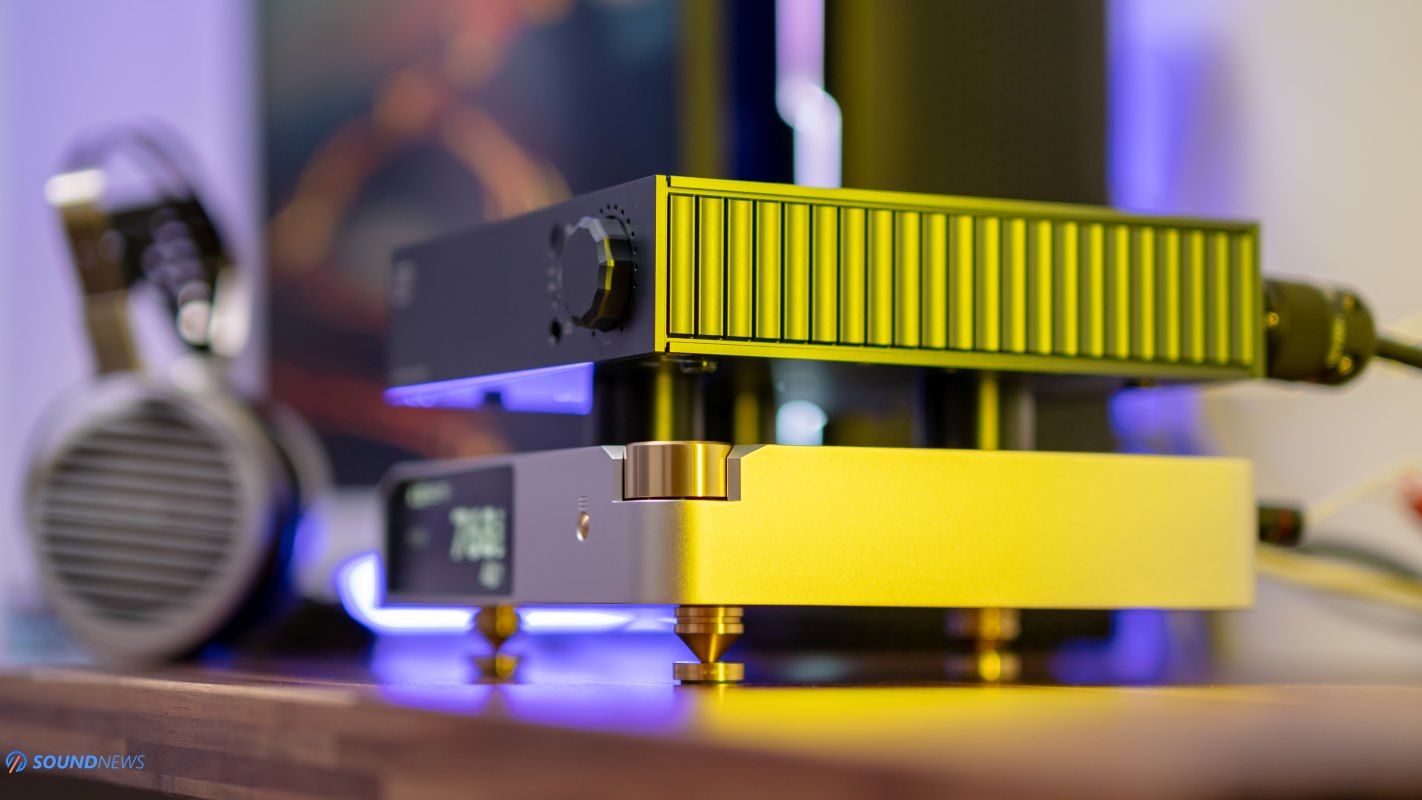
III. Soundstage & Imaging
Dear Weng Fai Hoh, I have a burning question: how did you pull this off? Seriously, that output stage shouldn’t be able to conjure this kind of sonic sorcery. Forget measurements for a moment – there’s a space, a vastness to the Harmony’s sound that defies all logic. It doesn’t just fill my room, it transports me.
I know, I know… that sounds like the ramblings of a madman, but let’s face it, audiophiles are a peculiar breed. We chase the impossible: the feeling of being right there at the performance, instruments swirling around us with otherworldly precision. Sure, they can stick fancy equipment on my head and measure my brainwaves, but they can’t quantify that elusive sense of air and space that makes the whole experience come alive.
Let me paint a picture: if your standard chip-based DAC has a soundstage the size of a tennis ball, a decent mid-fi option may expand that to a volleyball. A well-regarded DAC from Topping or Gustard? Let’s call it basketball-sized. Now, imagine the Harmony casually juggling a giant yoga ball. It’s that kind of leap. Suddenly, my room is gone, replaced by a concert hall, a smoky jazz club, or by the recording studio itself. Even my pricy Chord DAVE, while undeniably skilled, doesn’t consistently achieve this level of holographic depth and sheer scale. It needs extra help: a Hugo M Scaler, a fancy (triple trouble) linear power supply… upgrades that bloat the price. The little Harmony? It’s effortless. Plug in a decent streamer (especially if it’s got that luscious I2S output), queue up the right live recording, and hold on tight.
This little DAC has been redefining my expectations. As my final act of sonic masochism, I decided to pair it with the ridiculously oversized Trafomatic Primavera headphone amp – a beast that dwarfs the Harmony six times over. Then I strapped on a pair of my favorite open-back planars, made myself a drink for good measure, and closed my eyes. Let’s see what this thing can do with Rory Gallagher‘s Just The Smile… (make sure it’s the 2017 remaster – that 50th-anniversary one is sonically anemic), here it is on Qobuz and Tidal. I hit play, and boom. My ears grew massive; my head felt tiny. Sounds spiraled from behind, and swooped down from above… the stage wasn’t just in front of me, it was all around me. Each note felt tactile, a playful poke whispering, “I’m over here… now over here… now pay attention to me…” My only option was to surrender. Rory’s guitar wept, soared, and bled emotion. The man put his soul into that instrument, and the Harmony DAC wasn’t just playing music, it was channeling the raw essence of an artist.
The rest of the album was a blur of joyful rediscovery. With those headphones, the Harmony’s stagecraft unlocked dimensions I hadn’t even known existed within my favorite songs. I was lost in a sea of guitar solos, drum fills, and the sweet ache of Rory’s voice. Forget “depth,” this was a full-on, out-of-body experience. I understand there will always be skeptics, those who’ll only trust a graph or a spec sheet. But the magic the Harmony breathes into music? That’s something you simply can’t measure.
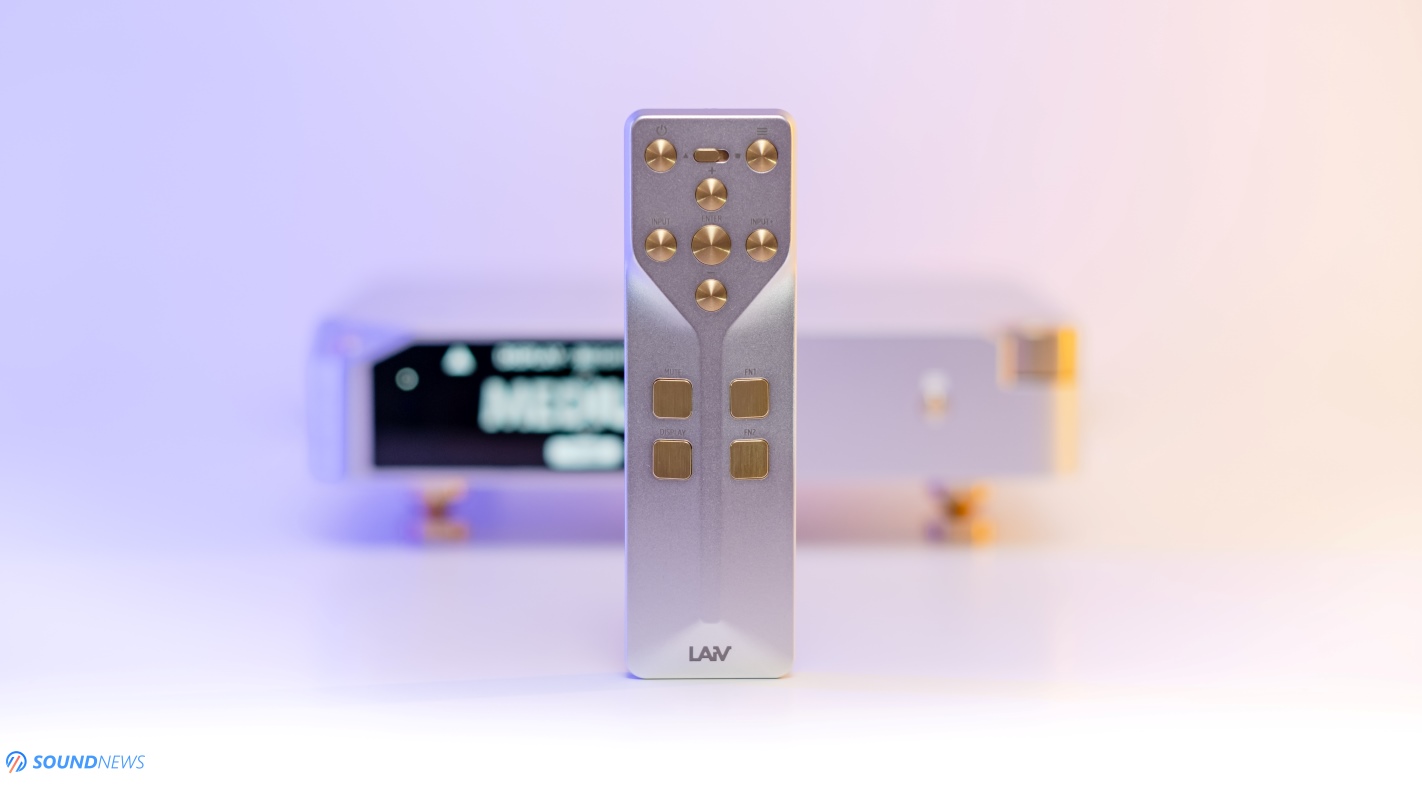
IV. Resolution & Transparency
They say R2R ladder DACs and resolution are like oil and water – destined to remain separate. And sure, there’s truth to that. Pair a budget R2R DAC with an el cheapo tube amp, and you’ve got yourself a recipe for a warm, fuzzy sonic hug, not an x-ray view into the heart of your music. But, when you’re dealing with the upper echelons of audio gear…that’s where things get interesting. See, there’s this audiophile obsession (one I fully share, mind you) with infinite detail, that crystal-clear window into the recording itself. It’s a madness that sends us chasing expensive gear, only to realize the search is never-ending. Now, imagine this madman – yours truly – who craves that level of resolution but prefers the warm embrace of tubes and, yes, the inherent lushness of R2R DACs. It’s a dance with contradictions, but there’s magic at the heart of it.
And that’s where the Harmony DAC throws a curveball. This isn’t some throwaway budget unit. It’s a calculated assault on that classic notion that only Delta-Sigma DACs can truly resolve the finer details. Sure, LAiV isn’t giving away all its secrets with firmly closed R2R ladder networks (and good for them – the AliExpress clone factories don’t deserve a free pass), but the results speak for themselves. Is it an affordable DAC? Well… it depends on your definition of affordable. Let’s be real, the Harmony isn’t exactly pocket change. But, consider what you’re getting: the build quality, the free shipping, the taxes covered, the generous warranty… Suddenly, that price tag feels a lot more reasonable. And the sound? When compared to the usual suspects I’ve had around (Denafrips, Gustard, Rockna), the Harmony DAC delivers a surprising dose of resolution. It’s like upgrading my sonic prescription; the music snaps into focus, gaining depth and clarity I didn’t even know I was missing.
Of course, I’m well aware that I’ll never fully escape the endless upgrade cycle. My recent Raidho TD2.2 speakers are a testament to that (those things are insanely revealing). But here’s the thing: the Harmony, by simply existing, by delivering this level of performance at this price point, throws down a challenge to the status quo. Suddenly, it feels like everyone else is playing catch-up. Sure, it’s not about knocking a Mola Mola Tambaqui or a Rockna Wavedream Signature off their throne – those are sonic behemoths worthy of their mythical status. But the fact that the Harmony can even breathe the same air as units double, triple, or even six times its price is downright impressive. It’s not just about the performance; it’s about the possibilities. If LAiV can do this on their first major outing, imagine what they’re capable of in a few years.
The Harmony DAC is a disruption, a sign that the audiophile world I love so dearly (and occasionally curse for its relentless expense) is evolving. It’s proof that getting seriously good sound doesn’t have to mean draining your bank account into oblivion. LAiV understands that music is both heart and science, that warmth and resolution can coexist. And for those of us who’ve always searched for that elusive balance, the Harmony DAC feels like the opening act of a revolution – one that I’ll happily be a part of.
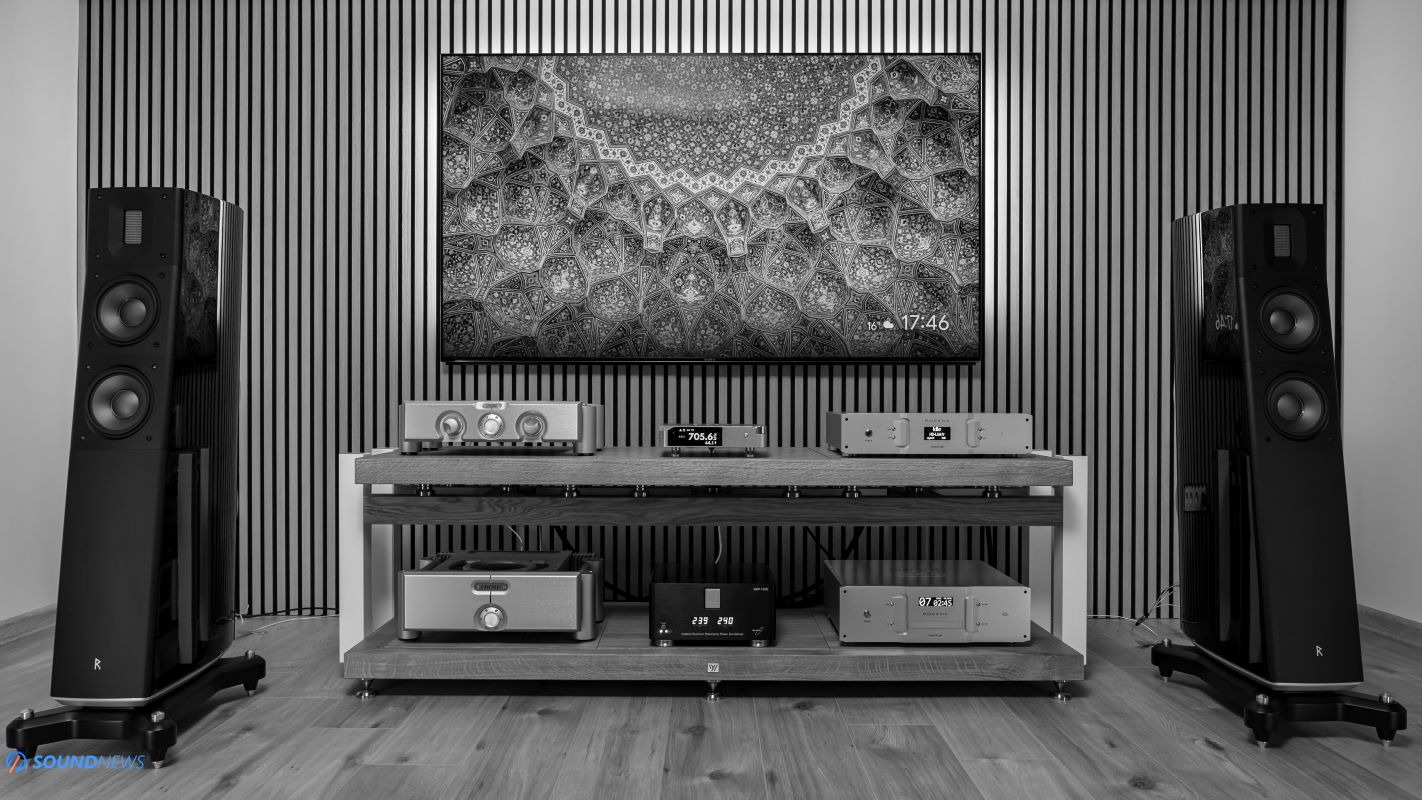
V. LAiV Harmony DAC in a Stereo Rig
The Harmony DAC isn’t a bloated, feature-packed “jack of all trades.” It’s a testament to the transformative power of focused engineering, a rejection of anything that could muddy the sonic waters. No built-in preamp or volume control – LAiV understands that those add-ons, tempting as they seem, are rarely done to true audiophile standards. The Harmony is designed to do one thing exceptionally well: convert a digital signal into its purest analog incarnation. Think of it as the audio equivalent of a precision scalpel, not a multi-tool that does everything half-decently.
Of course, this approach requires a little more thought when assembling your system. Hooking the Harmony DAC up to a mediocre streamer or a lackluster amplifier won’t unlock its true potential. The ideal setup puts that meticulously crafted signal in the best possible hands. Think of a high-quality streamer, followed by either a top-notch integrated amp for a streamlined approach or a dedicated preamp/power amp combo if you crave ultimate control over every nuance. This might be less convenient than an all-in-one box, but the reward is sonic purity that simply can’t be faked. And hey, half the fun of being an audiophile is the tinkering, right? Plus, LAiV’s commitment to building a whole ecosystem around the Harmony – their upcoming HP2A preamp, those GaNM monoblocks… that’s music to my ears. It signals a dedication to excellence at multiple price points.
For my test run, I’ve gone all out, slotting the Harmony into my most revealing setup. The Rockna Wavedream NET, my pride and joy, streams pristine data via I2S. The Harmony then takes the baton, passing its musical magic through the meticulously crafted Chord Ultima 3 preamp. Finally, the mighty Ultima 5 power amp flexes its muscles, driving those Raidho TD 2.2 speakers with unwavering control. This isn’t just random equipment tossed together. Each component of this chain was meticulously chosen to expose any flaws, to create a sonic magnifying glass where only the finest gear survives unscathed. For the Harmony, it’s a test by fire…and amazingly, it holds its own.
Obviously, it doesn’t match the sheer, bone-rattling power of the Wavedream Signature. We’re talking about devices in completely different price brackets. But here’s the kicker: the Harmony delivers on the aspects audiophiles crave the most. The soundstage, that elusive sense of three-dimensional space… it rivals converters three times its price. Forget cheap, flat sound; the Harmony paints with air and depth, placing instruments around you with uncanny precision. It excels with both electronic and acoustic tracks, revealing the nuance and emotion in every plucked string, every lingering note.
Is it a budget miracle? No. But the Harmony proves that those sonic “diminishing returns” aren’t as steep as we’re often led to believe. The Wavedream Signature still offers that raw, visceral impact, that heart-pounding sense of sheer scale. But the Harmony isn’t about brute force. It draws you in with detail, with a flowing emotional landscape that breathes life into your music. It doesn’t force the music into a clinical, dissected form; it lays it bare before you as a complete, emotionally charged experience.
I’ll admit, my Raidhos still sound like my Raidhos – they’re exceptionally revealing speakers, and the Harmony isn’t about to magically transform them. But the fact that this surprisingly affordable DAC can even breathe the same air as such high-end transducers speaks volumes about its capabilities. It’s more than just technical precision; the Harmony reminds me why I fell in love with music in the first place. Yes, there might be a smidge less resolution here, and a touch less raw power there, but what you get in return is soulful, deeply engaging musical immersion. Suddenly, the endless chasing of benchmarks and specs fades into the background. The Harmony makes me want to sit back, rediscover old favorites, and simply let the emotions wash over me. In the endlessly expensive world of high-fidelity audio, that feeling of pure contentment? Now, that truly feels like a revolutionary breakthrough.
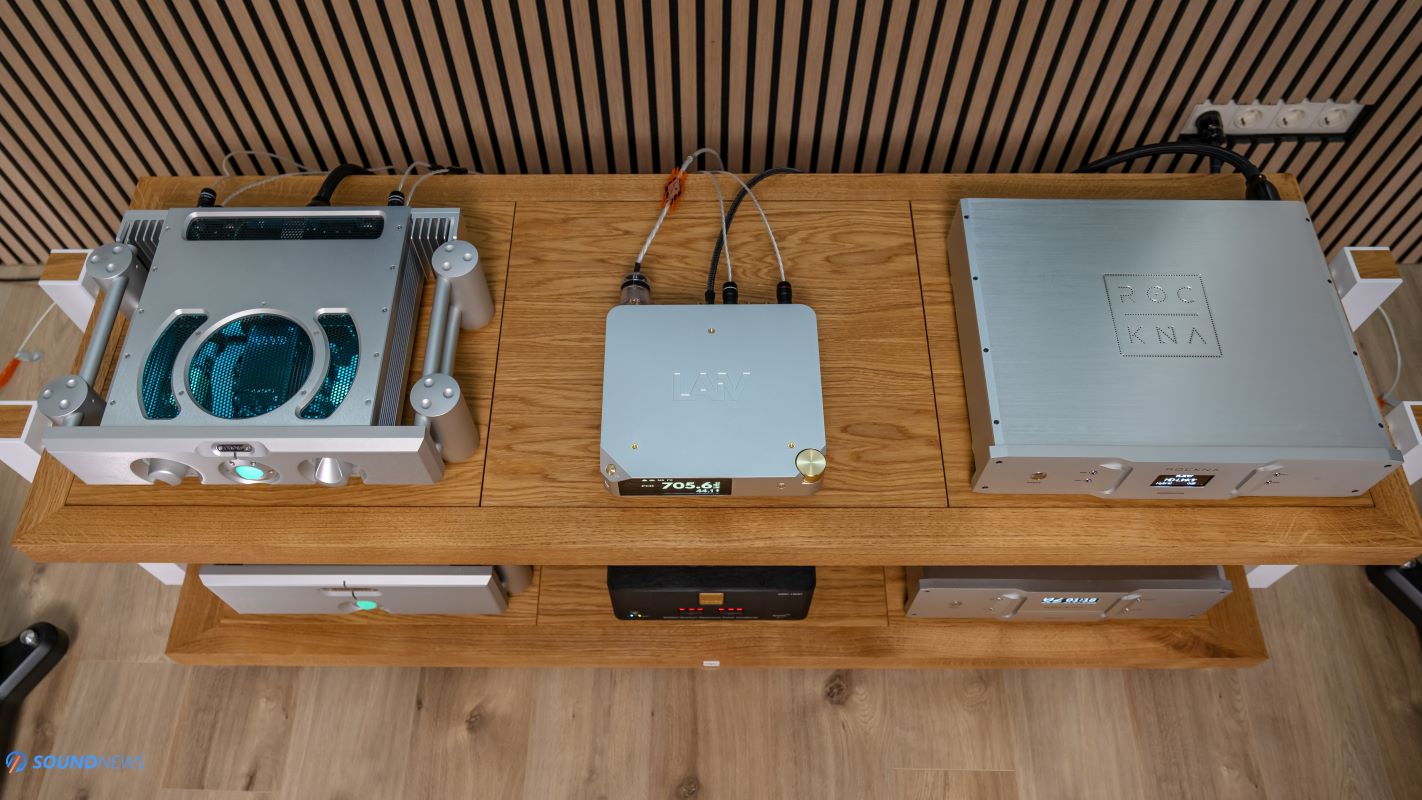
Frequency Response
VI. Bass
The Harmony didn’t impress a dynamics junkie in the very first hours of use. The sound was slower than usual and the low-end had nowhere near the control my Reference DACs had. I didn’t want more presence in the bass, nor a stronger kick down low, all I wanted was better control over the lowest octaves. The early hours with the Harmony felt a touch too polite, lacking the rhythmic authority that I was craving.
But then came the revelation, courtesy of Weng Fai Hoh himself: “Around 100 hours of burn-in should be sufficient”. With a sad face, I went back to my lair and let it cook slowly connected to a headphone amplifier, which in turn drove a soon-to-be-reviewed Meze Liric 2 closed-back headphone. The notion of extensive burn-in might be controversial, but in this case, patience was truly rewarded. After hours of letting the Harmony sing its heart out, a reunion with my favorite bass-heavy tracks was a whole new experience. Gone was that initial sense of restraint. In its place, I found a refined sense of power, a start-and-stop precision that finally did justice to both my music and my system. Will the Harmony ever challenge the bone-rattling lows of my mighty Wavedream Signature? Of course, not – we’re not talking about devices in the same weight class. But relative to its peers, Harmony’s transient response is a cut above, delivering a compelling blend of punch and nuance.
For those who’ve primarily experienced cheaper delta-sigma DACs, the Harmony’s bass will feel like an upgrade. There’s added presence, a bolder sonic foundation that reveals subtle textures and shifts in intensity previously obscured. It’s like switching from standard definition to a high-resolution image: the whole musical landscape gains depth and solidity. Am I satisfied as a self-proclaimed transient response nut? Absolutely. The Harmony might not be designed to shake the rafters, but it’s more than capable of delivering a satisfying low-end experience.
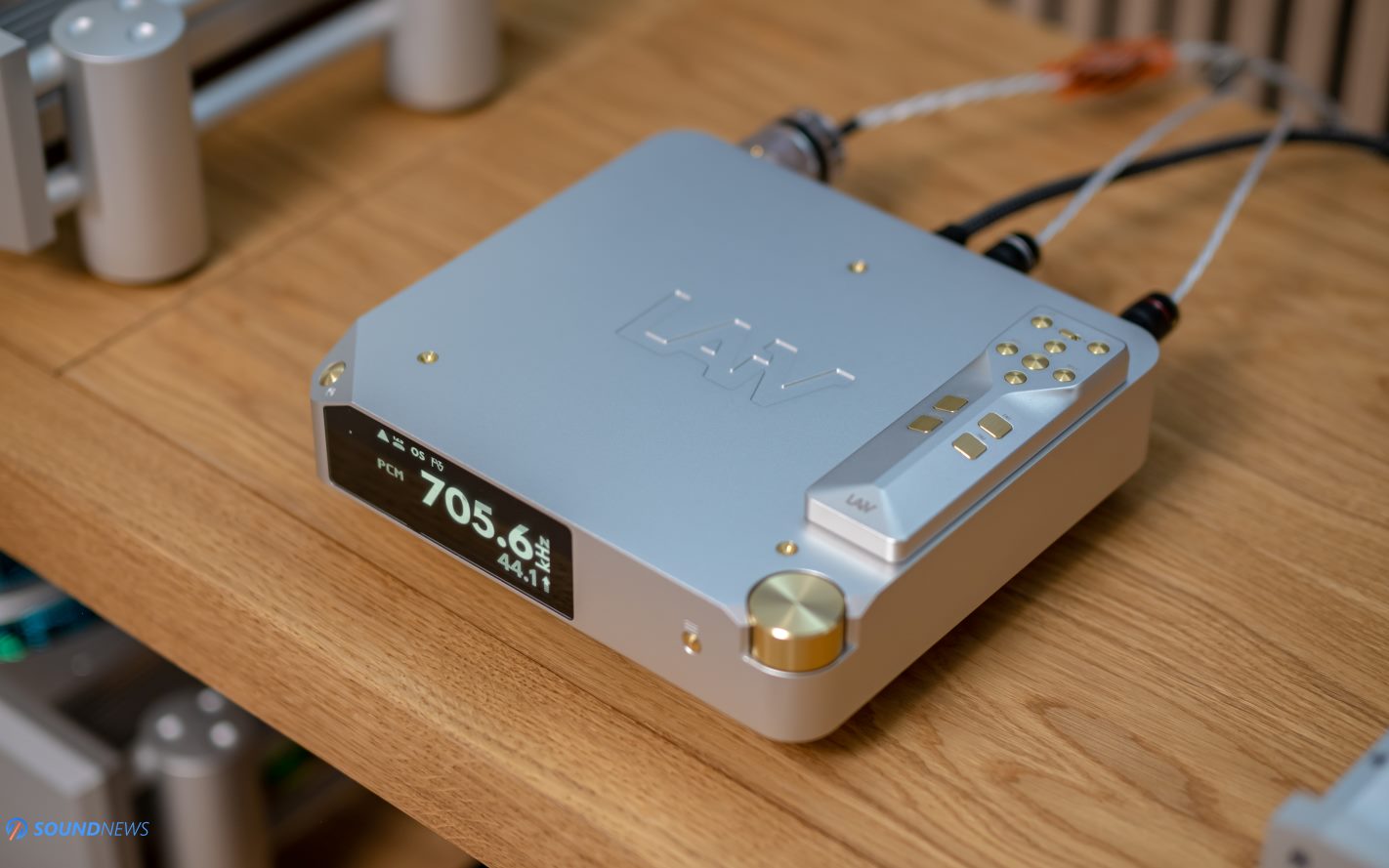
VII. Midrange
Forget the technical measurements and audiophile jargon. The Harmony DAC’s most potent weapon is its midrange, with the kind of emotional resonance that simply can’t be captured in a spec sheet. Etta James comes up on the playlist, a recording that seems older than myself. The best of Etta James no less. The recording is all muddy and unrefined, you could easily hear the hiss, and the noise floor was so much higher than the usual 21st-century records, but God damn! Before opening her mouth, I could almost feel her firing up two cigarettes and handing me one, tasting her lipstick on it. Suddenly, my heart pounds so loud, that I can’t hear any other sound, coming from either headphones or loudspeakers I know, it sounds crazy, but every dirty record transforms into an experience, working you out. From the inside. Ah, the beautiful midrange that does unthinkable things to us, music lovers. It’s clearer all right, it’s more saturated as well, and it’s even sweeter than it ever was before. I don’t want her out of my office and I’m sure as hell, that Etta will be singing tomorrow and the day after tomorrow and I will be again smoking a cigarette and tasting her lipstick. The midrange is indeed quite special, there’s more life in it, more emotion, and depending on who you are, you’re either laugh or cry, stand and applaud, or just recline your chair and add another track to your playlist. From the golden armada of D/A converters released almost on a weekly basis, I still hold the highest R2R and FPGA designs that use overkill power supply implementations.
The Harmony soars on everything that has to do with midrange and you’ll probably crack a smile on these words, but man, I hope you can experience this soul-grabbing performance all by yourselves. Until then, keep’em crafting guys, and keep the fire blazing.
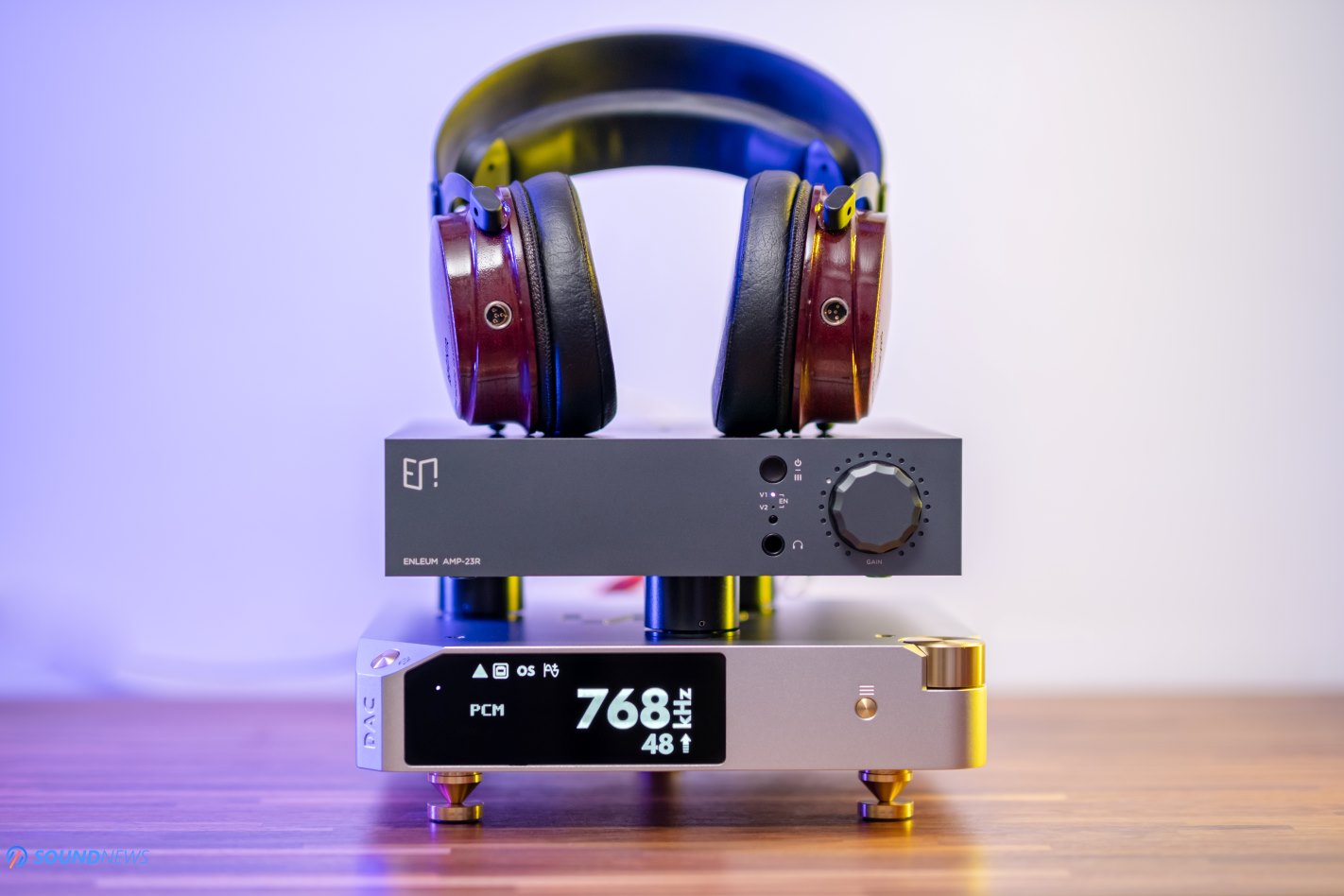
VIII. Treble
The treble: it’s the sonic battlefield where audiophile fantasies soar or are crushed without mercy. I’ve spent too many hours wincing at the relentless harshness of lesser designs, or enduring overly-smooth, rolled-off presentations that sacrificed detail for comfort. I approached the Harmony DAC with this baggage in mind, braced for potential disappointment. However, what I found was a breathtaking balancing act: an abundance of high-frequency detail delivered with a smoothness and refinement that defies expectation.
Imagine those twinkling stars on a clear night – the Harmony’s treble offers that same sense of effortless shimmer and detail. The delicate interplay of cymbals, the subtle textural nuances that often get muddled by lesser converters… it’s all there, laid bare for your enjoyment. Yet, there’s none of the dreaded digitus, no sense that the sound is artificially etched or that your eardrums are under assault. This gentle mastery of the treble region speaks volumes about the Harmony’s balanced, even-handed approach. You won’t find an exaggerated emphasis on any part of the frequency spectrum. If you’re the type of listener who thrives on aggressive detail and razor-sharp intensity, this nuanced approach might not be your cup of tea. But for those who yearn for hours of fatigue-free listening, who want to lose themselves in the subtle nuances of their favorite music, Harmony’s treble performance is a thing of beauty.
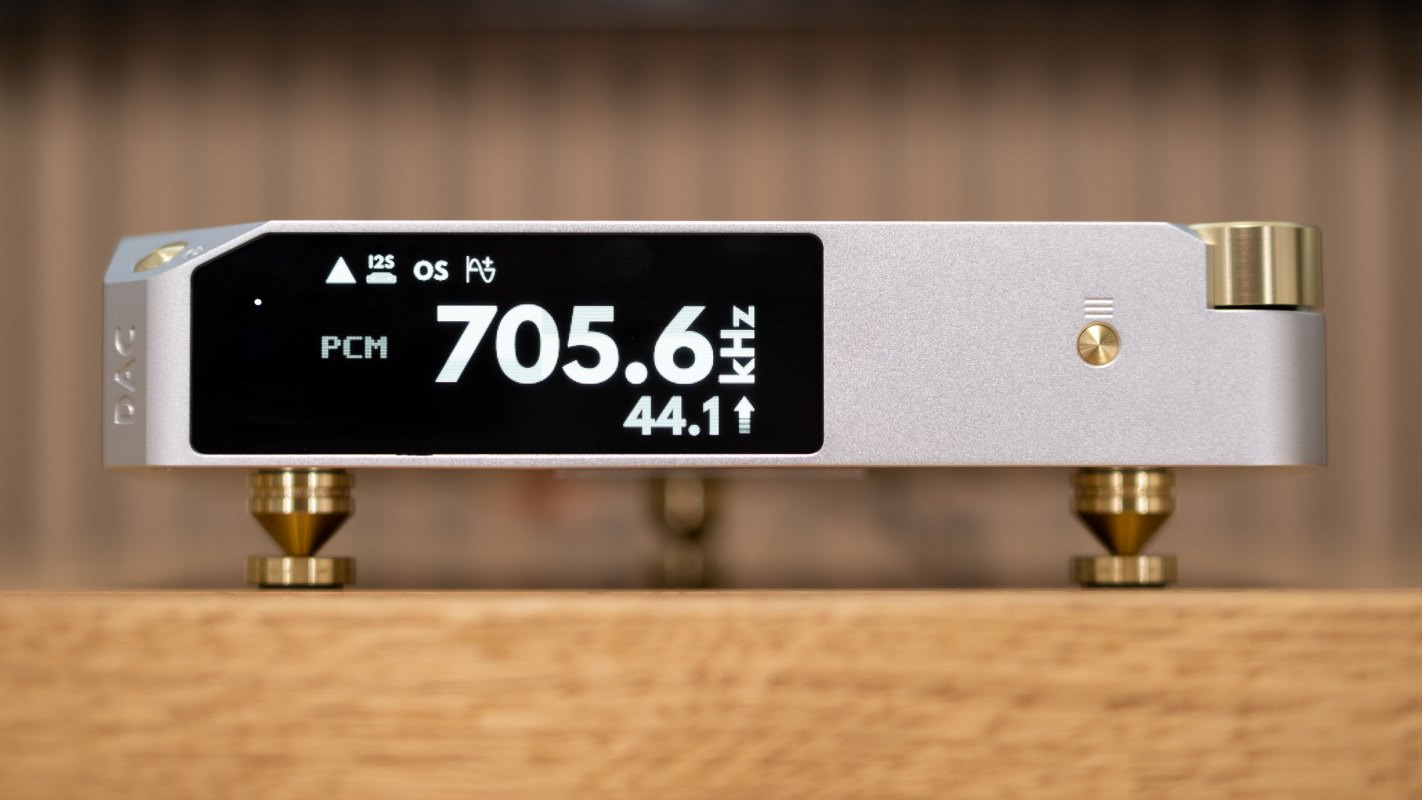
Wrapping Up
Let’s lay the truth on the table, shall we? For $2700 you’re getting a package that shatters expectations for high-end audio:
- An unboxing experience that rivals luxury tech, a testament to a company that gets it
- Sleek design that elevates your listening space, machined with a precision that commands respect
- Quality components and impeccable construction – a device built to last
- The flexibility of hardware-based oversampling or the good old non-oversampling, letting you tailor the sound to your preference
- True balanced R-2R circuitry, delivering the warmth and timbre audiophiles crave
- Massive, informative OLED display – an elegant solution for knowing exactly what’s happening
- Free worldwide shipping and a 30-day return policy
- 3-Year warranty – peace of mind for even the most demanding enthusiast
Let’s be brutally honest: how many audio companies offer even half of this at twice the Harmony DAC’s price? For most, the answer is a resounding zero. They might skimp on the unboxing, hide questionable build quality under fancy casework, and skimp on after-sales support. LAiV, with its first major product, chose a different path: one paved with a dedication to both technical excellence and customer experience. This device isn’t just a piece of gear; it’s a statement of what high-fidelity audio should be in the 21st century.
I’ve deliberately avoided direct comparisons throughout this review. The fact that I haven’t mentioned a single DAC under $3000 should speak volumes. The competition at this price point simply fades in comparison, as much as it pains me to write those words. Remember those passionate discussions surrounding the Gustard R26? It shook up the market, offering a glimpse of true high-fidelity at an accessible price. LAiV has one-upped that one in almost every department, except for dynamics, delivering a product that’s not just a step ahead, but several leaps ahead.
Beyond pure sound quality – an area where the Harmony excels – there’s the intangible stuff: the reliability, the support, and the aesthetics that blend seamlessly into any decor. These elements often fall by the wayside, but LAiV understands that they matter just as much. That’s why, for anyone who appreciates those little touches, the Harmony DAC is an obvious choice.
I’ve gushed, I’ve raved, I’ve made bold claims. But every word comes from a place of genuine excitement for the potential this represents. The Harmony isn’t just a superbly capable DAC; it’s a signpost for the industry, showing what’s possible when a team truly cares about every step of the audiophile journey. There’s still a lingering question as to whether a dedicated preamplifier would unlock even more of Harmony’s potential, but even as it stands, this DAC has earned its place at the top. This isn’t just about recommending a great product; it’s advocating for a future where quality and customer focus are the norms, not the exception. I’m excited to see what LAiV does next.

Yes, the LAiV Harmony DAC is an investment. But it feels less like a gamble and more like the start of a beautiful relationship. If you, like me, prioritize musical engagement, technical prowess, and a company that stands behind its creations, take the plunge. You might just become a believer too.
The LAiV Harmony DAC is available exclusively via their online store right here. $2700 gets you a meticulously crafted audiophile experience and a true giant killer unit. If you take the plunge and have some burning questions, feel free to drop a line in the comments section below. That’s all for now, folks, Sandu’s signing out!
PROS:
- Unboxing the Harmony is an event, not a chore.
- The solid build quality, the elegant curves…it’s the kind of device you’ll want to display proudly
- Bonus points for the space-saving footprint
- A chunky, machined remote control that feels as good in the hand as the DAC looks on the shelf
- The PCB layout is a work of art, with top-notch components gleaming like jewels
- Fully balanced and fully discrete from input to output
- Sounds tactile and real, always trying to connect with your music
- One of the widest and deepest sounding units I have experienced so far
- Noise? What Noise? It’s noiseless in both a stereo and head-fi setup
- Resolution is the name of the game, rivaling pricier converters most of the time
- Tames brightness and listening fatigue without removing resolution from the upper treble
- It goes with a reference tuning, never tilting the tonal balance
- Dynamics and transients were impressive after about ~100 hours of use
- Free shipping, taxes, and duties baked into the price, plus the stellar warranty
- Value King. LAiV is begging you to give their DAC a shot, and honestly, at this price with this level of performance, it would be foolish not to.
CONS:
- It’s a DAC-only unit with zero additional features
- You’ll need a preamp for your power amp
ASSOCIATED EQUIPMENT:
- HiFi Racks: WoodYard Suspended Triple & Baby Modular
- DACs: LAiV Harmony, Rockna Wavedream Signature, Chord Electronics DAVE, Musician Audio Taurus
- Wireless Streamer & Music Server: Rockna Wavedream NET 4TB, EverSolo DMP-A8
- Headphone Amps: Trafomatic Primavera, Enleum AMP-23R, Ferrum OOR & HYPSOS, Burson Soloist Voyager, Flux Lab Acoustics Mentor X2
- IEMs: HiFiMan Svanar, Westone Mach 50, Hiby ZETA, FiiO FX15, 7Hz Timeless AE, Kinera Skuld, Moondrop Blessing 3 & others
- Full-sized headphones: HiFiMan Susvara, Arya Organic, Audivina, Ananda Nano, Meze Elite, Liric 2, 109 PRO, Erzetich Charybdis & Phobos V.2021, Sennheiser HD800S, Kennerton Rognir (planar) & Vali, Apos Caspian, Sendy Peacock & Apollo, FiiO FT5, HarmonicDyne Elite & Poseidon, Moondrop Venus & others
- Preamps: Chord Electronics Ultima 3 Pre
- Power Amps: Chord Electronics Ultima 5 Power, Burson Timekeeper 3X GT (x2)
- Loudspeakers: Raidho TD2.2
- Interconnects: Crystal Cable Reference2 Diamond (x3), QED Reference (x2)
- USB Cables: Supra USB Excalibur (x2), Chord C-USB, Matrix Hi-Fi USB
- HDMI Cables: Audioquest Dragon DBS, Audioquest Diamond DBS
- Speaker cables: Crystal Cable Reference2 Diamond
- Power Cables: Crystal Cable Reference2 Diamond (x2), Isotek EVO3 Premier (x2), iFi Audio SupaNova (x2)
- Balanced Isolation Power Conditioners: PLiXiR Elite BAC1500 (head-fi setup), KECES IQRP-1500 and P14 (stereo setup)
